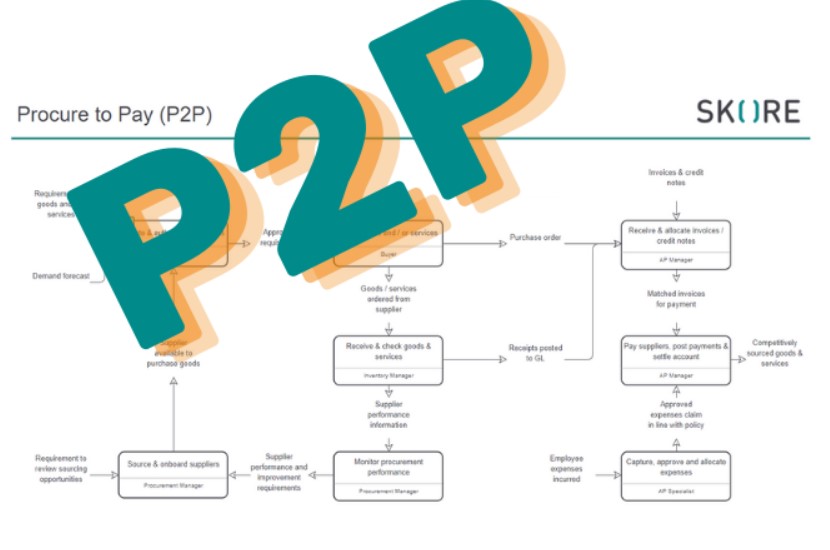Procure-to-Pay (P2P) systems have emerged as crucial instruments for businesses looking to improve financial management and expedite purchasing processes in the complicated corporate world of today. But effective p2p procurement involves much more than just putting contract automation software in place. Successful companies understand that technology is only one component of an all-encompassing procurement strategy. This article examines six important factors that decision-makers should think about while creating, putting into practice, and refining their P2P buying strategy. Organizations may optimize their return on investment and steer clear of typical traps that jeopardize procurement transformation programs by attending to these frequently disregarded elements.
-
Table of Contents
ToggleCultural Readiness Determines Implementation Success
The equally significant cultural component of procurement reform is sometimes overshadowed by the technological components of P2P deployment. If the corporate culture opposes the associated changes in procedures and roles, even the most advanced system will not produce the desired results. Leadership must openly evaluate the organization’s preparedness for change and take proactive measures to overcome any resistance before launching p2p procurement projects. Identifying important stakeholders, comprehending their issues, and creating focused change management plans are all part of this preparation. P2P adoption is usually quicker and yields higher advantages for organizations with cultures that value innovation, responsibility, and continual development. On the other hand, in order to achieve sustainable procurement transformation, organizations with inflexible hierarchies or departmental silos would need to undertake more intensive change management initiatives.
-
Process Standardization Must Precede Automation
Many businesses make the crucial error of trying to automate inconsistent or ineffective procurement procedures, which effectively amounts to digitizing rather than resolving preexisting issues. Organizations should take the time to examine, simplify, and standardize their procurement processes before deploying P2P technology. Documenting present procedures, spotting inefficiencies, and creating future-state workflows that are streamlined and adhere to best practices are all part of this planning. The standardization process should strike a balance between the capabilities of the chosen P2P solution and organizational needs, occasionally necessitating concessions on both sides. When this core work is finished before deployment, organizations usually see faster benefit realization, easier transitions, and greater user acceptance rates. On the other hand, those that hurry into automation frequently end up having to use costly workarounds to make room for procedures that are inconsistent or needlessly complicated.
-
User Experience Determines Adoption Trajectory
Even the most advanced P2P features are useless if consumers ignore the system because it is difficult to use. Sometimes, organizations overemphasize technological capabilities while undervaluing the significance of user interfaces that are easy to use and effective. Those who utilize the system infrequently for purchase requisitions or approvals are most impacted by this error in judgment. The user experience is given top priority in successful p2p procurement implementations, taking into account elements like screen layout, navigation routes, and transaction stages throughout the selection and setting phase. In order to ensure that the system can accept different degrees of technological comfort, organizations should include representative users in design choices and usability testing. Higher acceptance rates, fewer workarounds, and more overall satisfaction with procurement transformation are usually the results of this user-centric strategy. If users are always looking for methods to go around the system, even sophisticated capabilities are useless.
-
Data Governance Foundations Support Long-Term Success
High-quality master data, such as supplier details, product catalogs, account numbers, and organizational hierarchies, is essential to p2p procurement systems. These fundamental components rapidly degrade in the absence of robust data governance, compromising system performance and user trust. Before implementation starts, organizations should clearly define data ownership, quality requirements, and maintenance protocols. Important issues like who may add or edit supplier entries, how catalog material is kept up to date, and what validation procedures guarantee data accuracy should all be covered by this governance structure. Implementations move more smoothly and yield longer-lasting advantages for organizations with better-developed data governance. On the other hand, companies that disregard this basis frequently deal with issues including inconsistent catalog data, redundant vendors, and reconciliation problems that linger long after implementation. Problems with data quality seldom go away on their own; they need intentional governance frameworks and constant attention.
-
Supplier Engagement Strategy Determines Collaboration Quality
Organizations’ interactions with their supplier ecology are radically altered by p2p procurement networks, which present both possibilities and difficulties that need to be carefully managed. Innovative companies create all-encompassing supplier engagement plans that take into account the supplier’s demands in terms of communication, technology, and process modifications. Developing suitable onboarding strategies for each supplier sector based on transaction volume and strategic value is part of this preparation. In addition to providing suitable support resources for suppliers making the switch to electronic transactions, organizations should communicate clearly about expectations, advantages, and timelines. Stronger cooperative connections, fewer transaction exceptions, and increased supplier adoption rates are usually the results of this careful approach. On the other hand, companies that disregard supplier viewpoints frequently encounter opposition, problems with compliance, and worsening relationships that compromise the advantages of contract automation software.
-
Performance Metrics Drive Continuous Improvement
The p2p procurement is occasionally used by organizations without the establishment of precise metrics to assess their effectiveness and pinpoint areas for development. It is challenging to show return on investment or direct continuous optimization efforts because of this oversight. Organizations should establish key performance indicators that support their strategic goals, such as cost reduction, process optimization, or compliance enhancement, prior to implementation. These measurements must comprise both lagging indicators, which gauge current outcomes, and leading indicators, which forecast future performance. Prior to implementation, establishing baseline measures provides essential points of reference for assessing progress. Businesses that use data-driven performance management tend to find areas for improvement faster and maintain gains for longer.
Conclusion
Paying attention to factors that go well beyond technology implementation is necessary for p2p procurement to be successful. The contract automation software is only one component of a total transformation plan, as organizations that achieve remarkable outcomes understand. In order to position themselves for sustained procurement excellence rather than just finished implementations, businesses should carefully consider the eight variables listed in this article.











